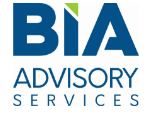Forget your ABCs. Get to know all about how Alphabet Inc. is raiding your broadcast station’s local revenue.
For those who ask what Alphabet Inc. is: Google it.
Alphabet Inc. is the parent company of Google and, in turn, YouTube. According to newly released data from BIA Advisory Services, local search advertising on Google and local advertising on YouTube will top $19 billion.
Google will represent close to 40% of all local digital advertising across all markets. Further, by 2022 BIA projects local Google advertising will surpass $27 billion nationwide.
“The most rapidly growing media channel for local advertising is mobile, followed by desktop advertising,” said Dr. Mark Fratrik, Chief Economist and SVP at BIA Advisory Services. “As the market leaders in these local digital advertising, Facebook and Google advertising are projected to grow at healthy rates. By comparison, local radio and television advertising are projected to be relatively flat over time, while print media advertising continues its decline.”
According to BIA, local Google advertising in 2018 is higher than the total digital advertising revenue on any local media.
When local Facebook advertising is added to local Google advertising, the two digital behemoths are estimated to account for close to 48% of all local digital advertising.
In fact, local Google advertising exceeds the total local advertising generated by all 11,044 commercial radio stations in the U.S.
And, as RBR+TVBR readers have seen in other recent reports, Google’s local ad dollar take now rivals that for all 1,282 full power commercial TV stations. BIA data also confirms this new trend.
The bigger headline is local digital’s impact on AM and FM and, perhaps, radio’s push to smart speakers and hand-held devices. With the continued rapid growth of digital advertising, BIA forecasts that by 2022 local Google advertising will almost double the over-the-air advertising of the entire radio industry.
“The local advertising marketplace has been significantly altered over the past five years with the growth of local advertising on Google, and to a lesser extent Facebook”, BIA Advisory Services CEO Tom Buono said. “We’ve been tracking local advertising for over 30 years and have witnessed the decline of print advertising and now we see serious threats to local radio and TV. However, we also realize the advantage traditional media has in local marketplaces and key decisions now around digital advertising will make all the difference to safeguard their share of the ad wallet.”





